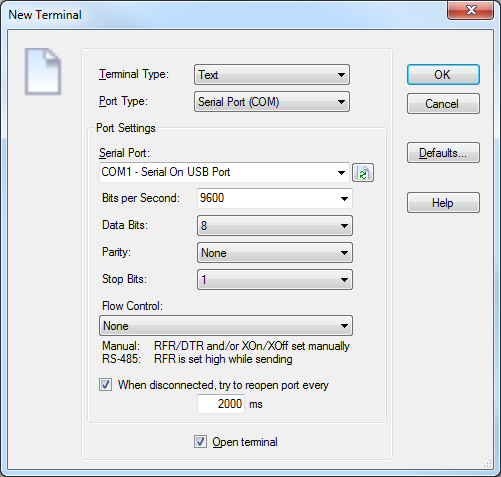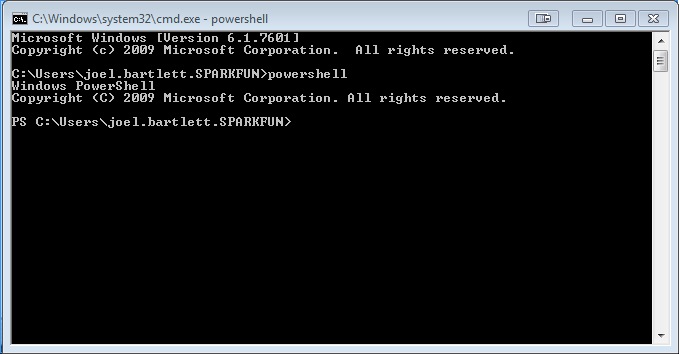

- #Linux test serial connection how to#
- #Linux test serial connection code#
- #Linux test serial connection Pc#
- #Linux test serial connection windows#
Multi-lidars data collection (using Livox Hub) Apollo does not use ROS2. proprietary platform is Polysync Core, which provides a bridge. As a basic building block of Apollo Cyber RT framework, each component contains a specific algorithm module which process a set of data inputs and generate a set of outputs. The packages have been tested on NVIDIA Jetson AGX Xavier with Ubuntu 18.
#Linux test serial connection code#
The picture looks similar, only slightly faster.I saw that you have already implemented the necessary code to make it work with lgsvl. ostream, 'eventformat', 'fcdc_serial' ) %% measure time t1 = toc tlop = %% disp received event disp ( ww ) pause ( 0.15 ) %% give serial port a break if count > 1000 break end end figure plot ( tlop * 1000, '.' ) xlabel ( 'function calls' ) ylabel ( 'delay read write event ' ) modal_val = mode ( tlop ( 2 : end ) * 1000 ) median_val = median ( tlop ( 2 : end ) * 1000 ) range_val = range ( tlop ( 2 : end ) * 1000 ) gtext () gtext ( num2str ( modal_val )) gtext ( num2str ( median_val )) gtext ( num2str ( range_val )) %% close what we have opened fclose ( 'all' ) delete ( instrfind ) istream, event, 'eventformat', 'fcdc_serial' ) tic %% read ww = ft_read_event ( cfg. value = 5 %% This can be a string or an integer, e.g., 1 or 'Rock_n_Roll_will_never_dye', however longer strings will take longer to be communicated count = 0 tlop = while true count = count + 1 %% write ft_write_event ( cfg. ostream = 'serial:COM1?BaudRate=115200' event. istream = 'serial:COM4?BaudRate=115200' %% and receive it on serial port 1 (serila ports are physically connected) cfg. %% here key1 is BaudRate and value1 is 115200 %% write something to serial port 4 cfg.
#Linux test serial connection Pc#
This is what I did on my office PC using FieldTrip commands ft_read_event and ft_write_event.ĭelete ( instrfind ) fclose ( 'all' ) clear all close all addpath ( 'H:\common\matlab\fieldtrip\' ) % addpath('H:\common\matlab\fieldtrip\private\') %% filetype_check_uri and ft_filter_event need to be in the path %% Note the syntax: serial:``?key1=value1&key2=value2&. We can send commands on one serial port and receive them on the other and then estimate the delay. Here we need a computer with two serial ports(or two computers).
#Linux test serial connection how to#
How to measure the delays of sending and receiving using a serial port connection If this doesn’t work just check the hardware connections.

#Linux test serial connection windows#
Then once the connection is established you can type in the windows putty display and can then read it from the Linux putty display and vice versa.On the windows PC, open up a putty session and setup a serial port connection (click on serial), and specify the name of the port where the serial device is connected to (e.g., ‘COM3)’, make sure baud rate is the same as on the Linux machine(i.e.The main thing to consider is the baud rate (e.g., 115200), which has to be the same on sending and receiving end. Choose serial and type the path for the serial port (e.g., /dev/ttyS0/). On the Linux PC, open up a putty session by typing putty.To check that the serial connection between a Linux computer and a windows computer is functional, you can do the following: How can I test the serial port connection between two computers? A null modem cable is an RS-232 serial cable where the transmit and receive lines are crosslinked. Faq realtime What kind of cable do I need for a serial port connection between two computers?įor the type of connection we are talking about here, you need a so called ‘null modem cable’.


 0 kommentar(er)
0 kommentar(er)
